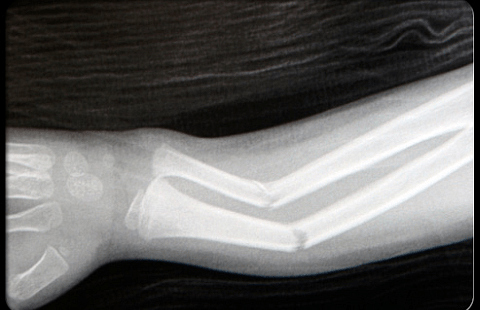Calcium, Bones, and Stress Fractures

ironguides coach Jono Rumbelow gets you thinking about the bones in your body and ways to prevent stress fractures. Have you ever thought about the function of the bones in your body? They provide a structural framework to protect and allow us to move thus interacting with the world. Some of our bones even function as factories for blood cells.
Bones are made up of calcium phosphate, layered in a matrix. Their size and shape determine how they handle various loads (stresses).
One remarkable property of bone is the ability to adapt and therefore continuously remodel. Every day, calcium phosphate is removed from some regions and deposited in others—depending on the stresses applied to them. There is a limitation to this, though, in that excessive stress results in fracture. This is I want to talk about today.
It is not uncommon to hear that athletes have developed a stress fracture of some sort while racing or training for an ironman. Such fractures develop from the summation of small forces over a long period of time (e.g., impact from running). It is typified by the persistent pain in a localized region, and sometimes tender to the touch. It often begins as a bony injury starting with a bone strain, then stress reaction, and finally the fracture (in order of increasing severity).
Early recognition leads to prevention of a more serious injury and thus faster cure. Since these injuries often sideline an athlete for a considerable period of time, a little knowledge about calcium and bone physiology can help go a long way on the prevention trail.
The two most important factors to help ensure healthy bones in athletes are 1. adequate dietary calcium and 2. a properly constructed training program.
Our nutrition is “fair” at best “fair”, and as for healthy, well that’s a whole other debate. Calcium supplements are a non-starter in most homes because of our daily diet. By the time most go to college or university, dark green veggies and legumes are far from our mind. In females this is where the problem can begin. The density of the bones starts to decrease, a process that for women begins at 35 and rapidly accelerates after menopause.
A well-constructed training program is also important for healthy bones. Since bone responds to training loads (e.g., running, resistance training) by becoming stronger, a gradual build-up over time is preferable to a rapid increase in training volume. Too sudden a jump to heavy mileage is probably the most common error leading to stress fractures. Additionally, women who have lost too much weight via excessive training and who have stopped getting their menstrual periods are at increased risk for stress fractures.
Since oestrogen protects against bone loss, the disturbance in normal hormonal status leads to accelerated bone loss and poor repair. For the same reason, athletes with eating disorders are also at increased risk. The other concern related to bone, later in life, is osteoporosis. Additional factors that increase the chance of osteoporosis are a sedentary lifestyle, smoking, heredity, and race (white and Asian).
Although this overview was necessarily brief, it should serve as a starting point upon which you can begin to assess your skeletal health.
Enjoy your training!
Jono Rumbelow, Certified ironguides Method Coach – South Africa
www.ironguides.net
* * * Your best is our business.™ * * *










